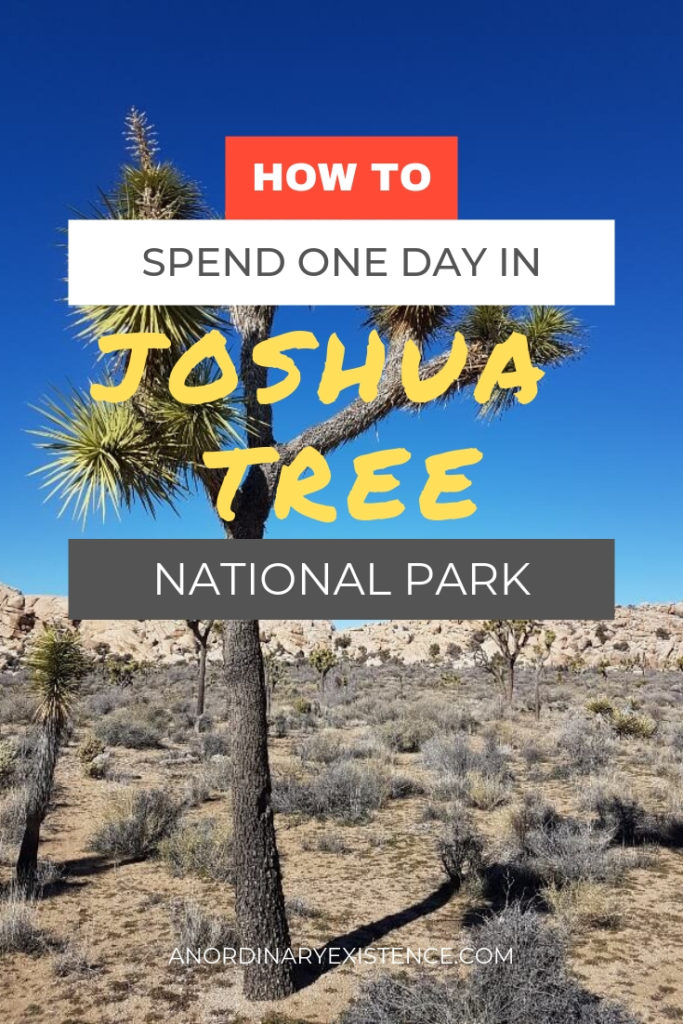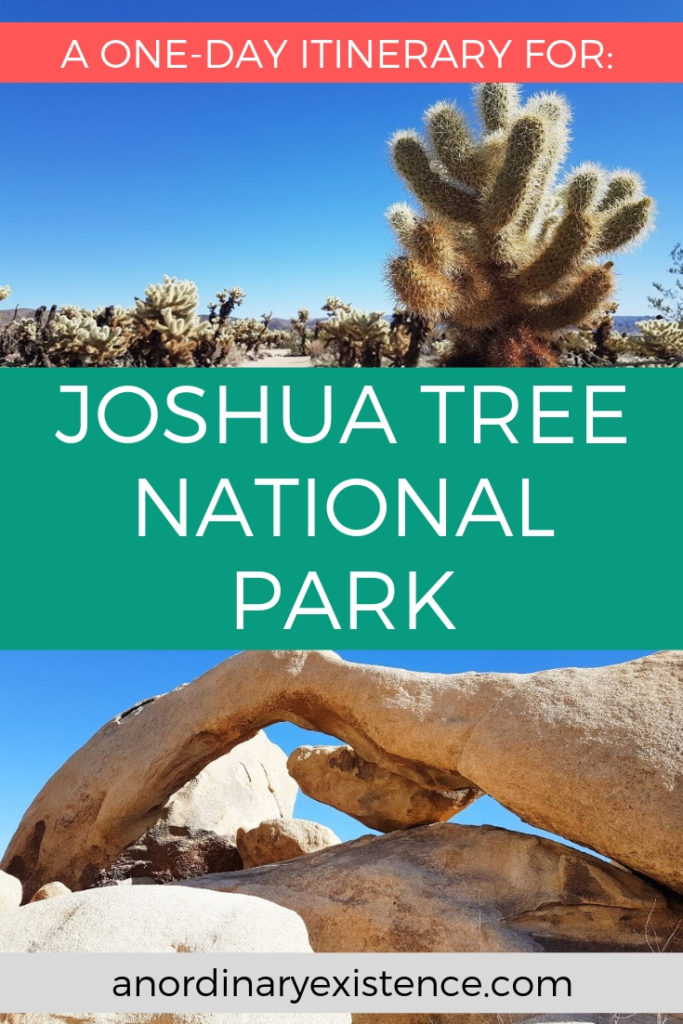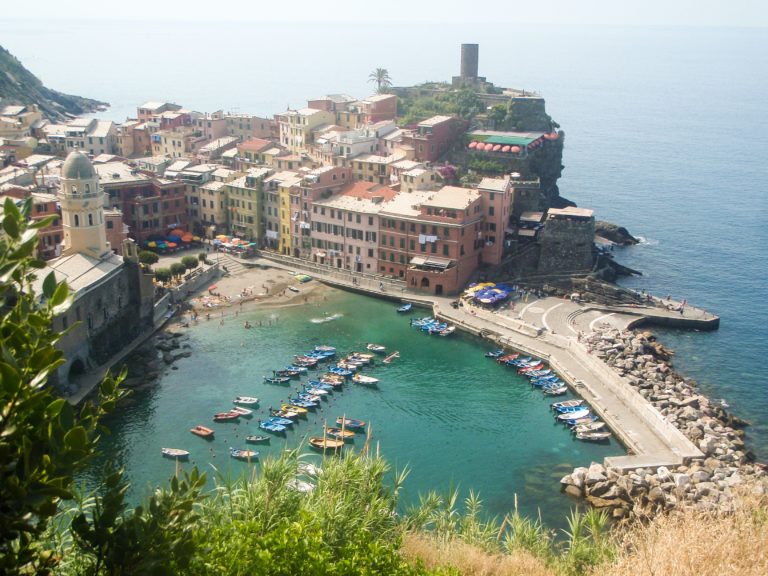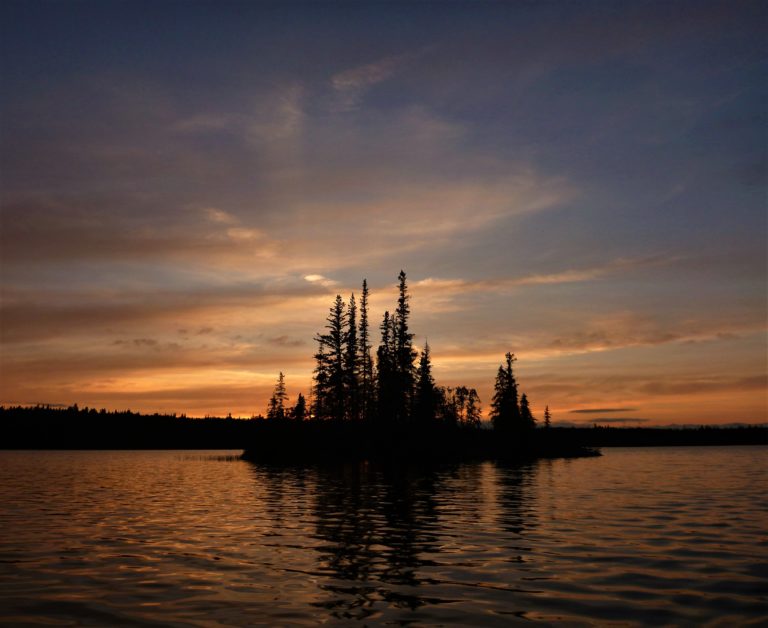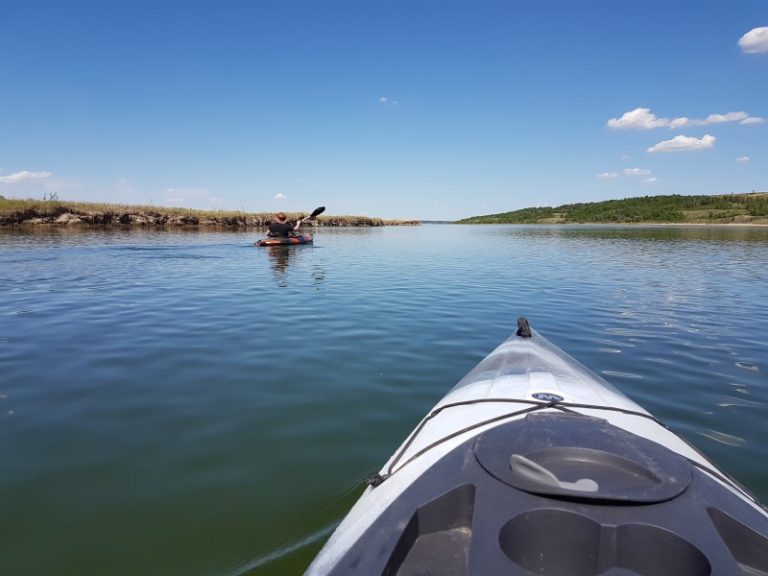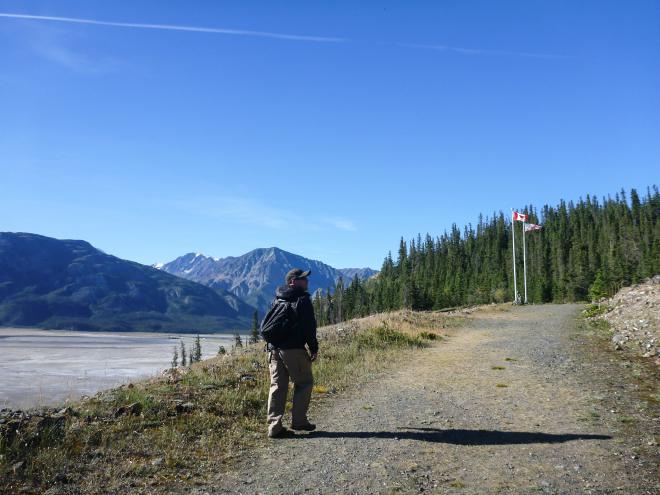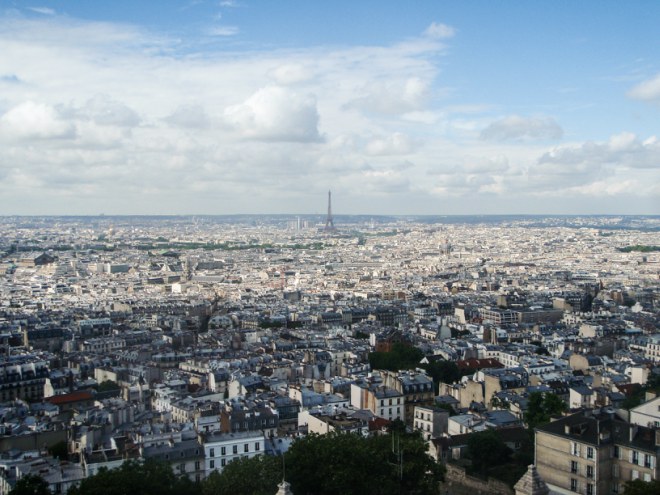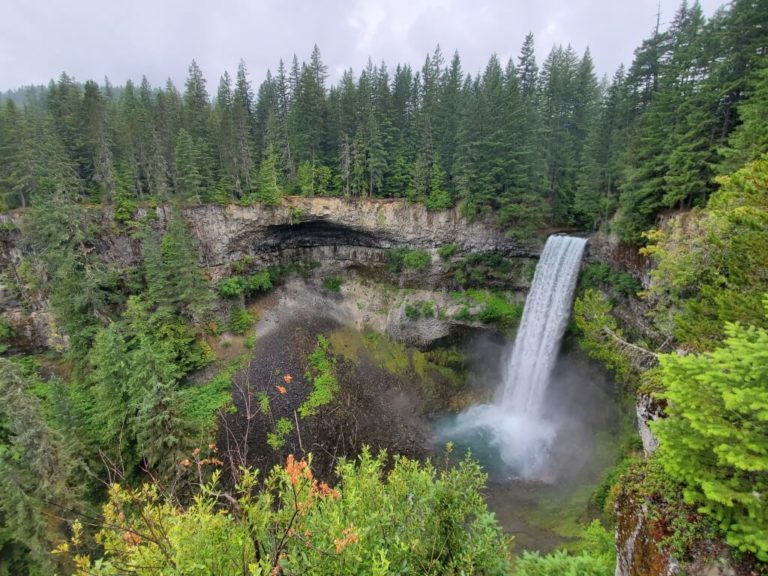HIKING IN JOSHUA TREE NATIONAL PARK: A ONE-DAY ITINERARY
This post may include affiliate links. As an Amazon Associate I earn from qualifying purchases. Find more info in my privacy policy.
Hiking in Joshua Tree National Park has been on my wish list for some time now so on a recent trip to Palm Springs we decided to take a day to go see the place. Since we only had one day, we had to narrow down our to-do list to something manageable while still wanting to get a good feel for the area.
Lucky for us, Joshua Tree is a relatively small park with a lot of great, shorter trails close to the main roads.
We managed to drive the entire length of the park, take in a good mix of hikes, and make the roundtrip from Palm Springs in a single day.
Below you can find our one-day itinerary, plus info and tips for visiting Joshua Tree National Park.
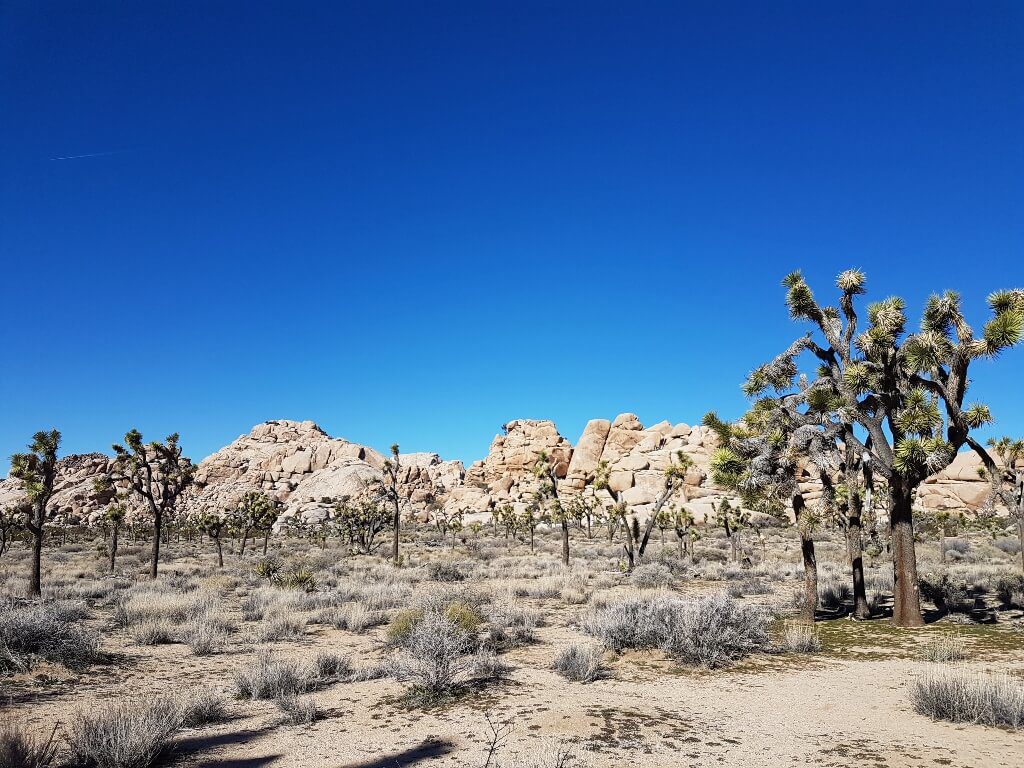
An Overview of Joshua Tree National Park
Joshua Tree National Park is located in California and encompasses two distinct ecosystems within its boundaries – the Colorado Desert which lies in the eastern half of the park, and the Mojave Desert in the west.
The Mojave is where you’ll find the namesake Joshua Trees (which are actually a species of yucca and not really a tree at all). There are also more roadways, hiking trails and sites to take in on the Mojave Desert side. If you are really pressed for time, this is likely the area you’ll want to focus on.
The Colorado side of the park is a little more barren and less developed but still worth seeing. Here you’ll find cactus gardens and giant piles of rocks lining the Pinto Basin Road.
The Park has three visitor centers – Joshua Tree at the north west entrance, Oasis at the north east entrance, and Cottonwood at the south entrance. There is a US$30 per vehicle entrance fee that can be paid at any of the visitor centers. This is also a great place to grab a map and check in with rangers about any trail or road closures before starting your day.
Joshua Tree also has numerous camping areas for those wanting to spend more than one day in the park.
Hiking in Joshua Tree National Park – A One-Day Itinerary
Joshua Tree National Park makes a great day trip from Palm Springs or any of the surrounding communities in the area. It’s even possible to do it as a day trip from Los Angeles, being that it’s only a 2.5-hour drive from there.
Our day at Joshua Tree focused on hitting as many hikes as we could as I was hoping to get a taste of the different and diverse areas of the park. Here’s what we got up to:
Drive from Palm Springs to Cottonwood Visitor Center
We decided to start our day at the south entrance of the park as I didn’t want to miss out on seeing the Colorado Desert. We rented a car at the Palm Springs Airport and made the one-hour drive via the I-10. Once in the park, we stopped at the Cottonwood Visitor Center to pay our entrance fee and grab a map.
Time Required: one hour for the drive; 30 mins at the airport car rental counter; 10 mins at visitor center
Cholla Cactus Garden
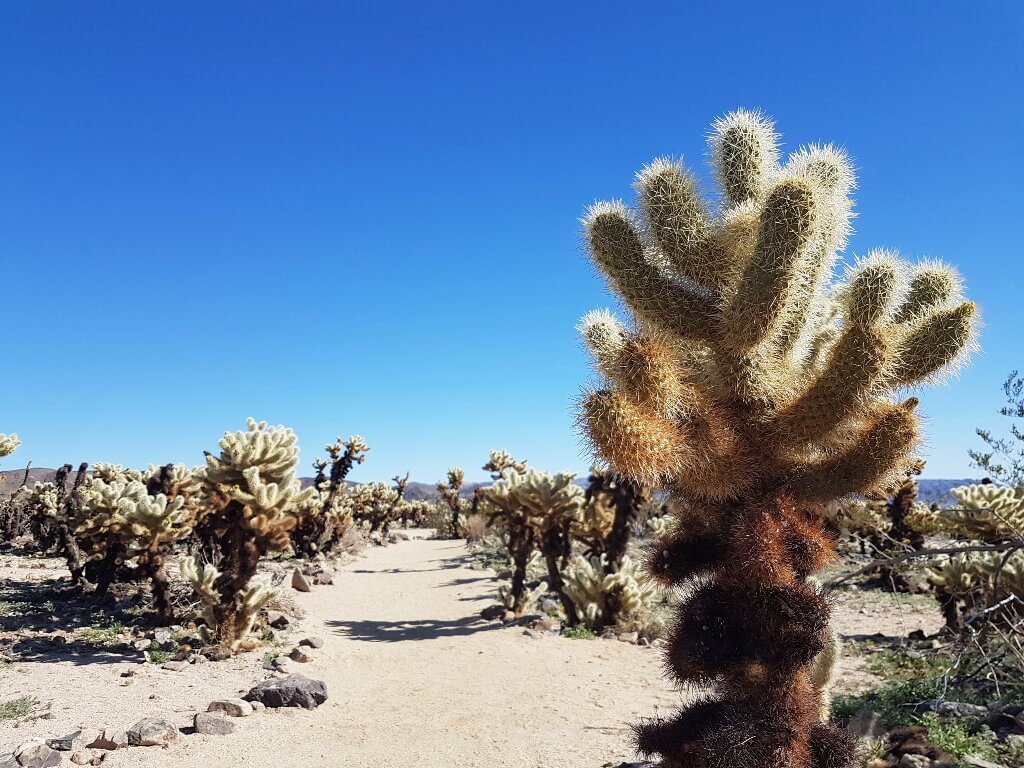
This was one of the hikes I was most excited for since I wanted to see these furry-looking cacti in person. The Cholla Cactus, also known as the Teddy Bear Cactus or the Jumping Cactus, is famous for its fuzzy appearance and its ability to “jump” and stick on if you get too close. Hikers are advised to stay on trail and keep their distance from the plants to avoid having to remove the painful stickers.
There is a short and easy .25-mile trail winding through the garden where thousands of naturally growing Cholla cacti stand in dense concentrations. It’s neat to see and I highly recommend a stop here.
Time Required: 15-30 mins depending on how many times you stop to take photos
Arch Rock
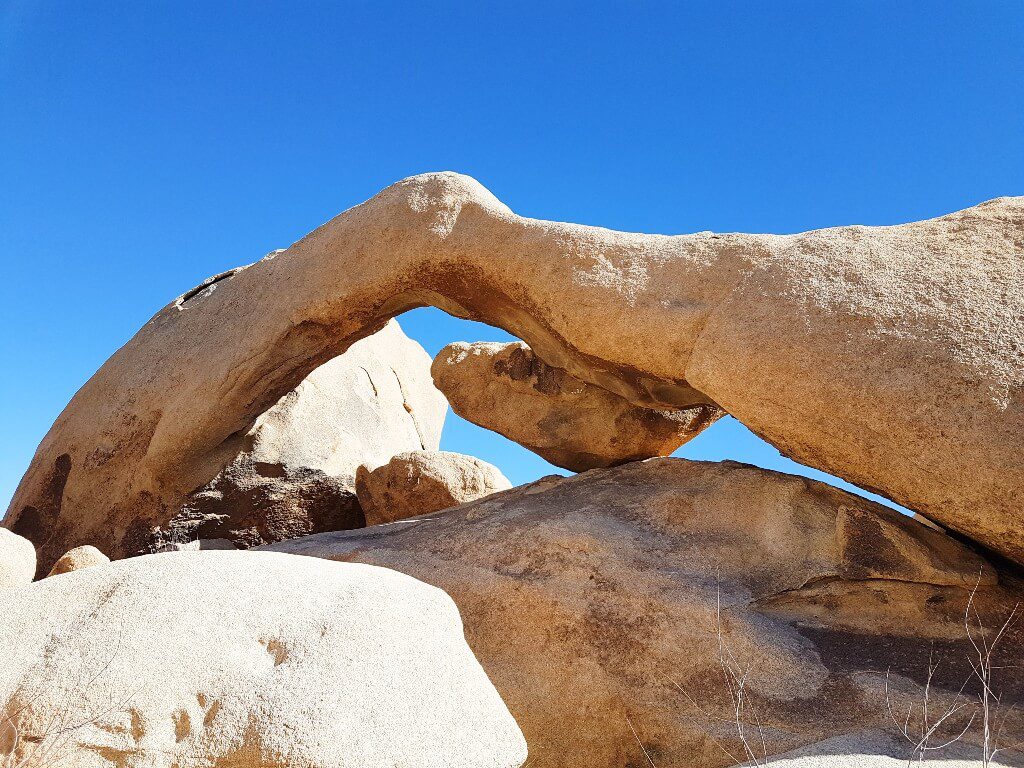
Years of erosion have left many interesting rock formations throughout the park. Our next stop was at one of these – Arch Rock located just a little behind the White Tank Campground. There’s a short .3-mile trail leading to the rock from campsite 9, or you can make it a longer hike from a parking lot on the main road.
The path takes you through and around the rocky landscape where you could explore for hours if so inclined. Arch Rock itself is … well, a rock … shaped like an arch. But it’s still neat to see and a nice short walk to get there.
Time Required: allow 20-30 mins to wander and look around
Hidden Valley Trail
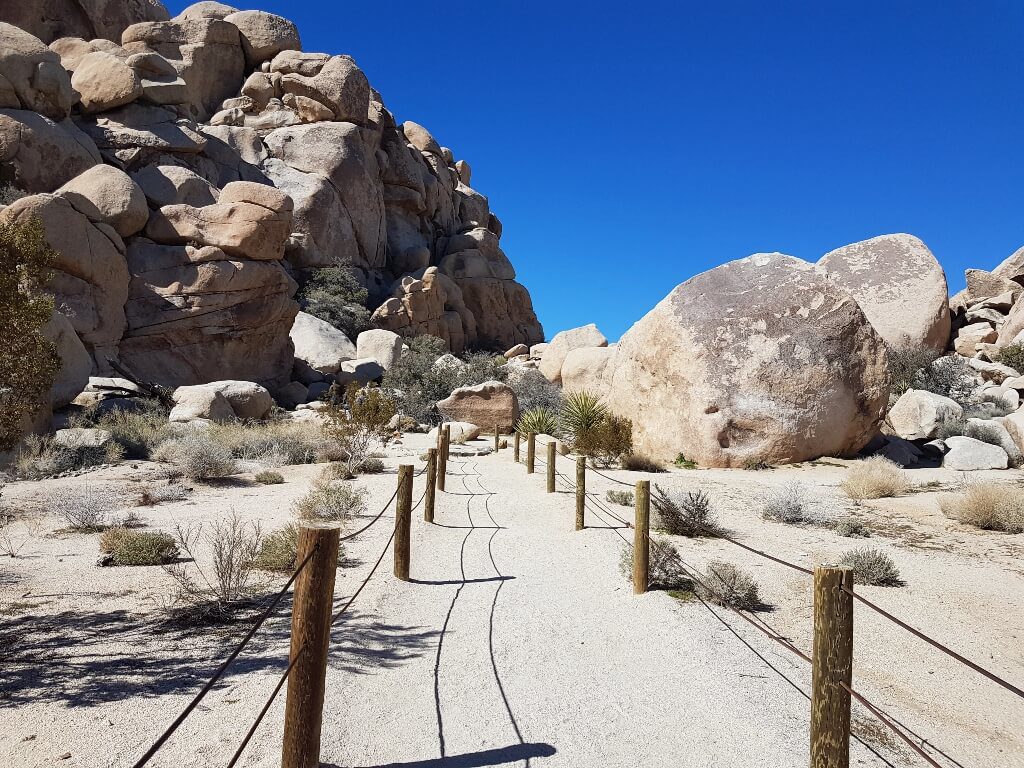
An easy 1-mile loop winds through Hidden Valley, a once-secret spot closed in by high rock walls. Legend has it that cattle rustlers hid their illicit herds in the valley to avoid getting caught by authorities. Having grown up on a cattle farm, I had a hard time imagining a herd being able to survive such a dry and barren place but apparently the ecosystem has changed drastically and there was a lot more vegetation cover back in the day.
Today, you won’t find herds of cattle, but you will find massive boulders and various desert vegetation. Interpretive signs give information on the different plants and animal life found in the valley while you make your way around the dusty rocky trail.
Time Required: 1 hour will give you plenty of time to make the loop
Picnic Lunch at Hidden Valley Day Use Area
The trailhead for the Hidden Valley Trail is found at a parking lot and day use area which makes a great spot for a lunch break. There are restrooms and picnic tables available. Remember to bring your own food and water as there are no services within the park.
We picked up pre-made salads from Mid Mod Café in Palm Springs before our trip to Joshua Tree.
Time Required: No need to hangout unless you feel like you need a break. 30 mins should be plenty.
Keys View Lookout
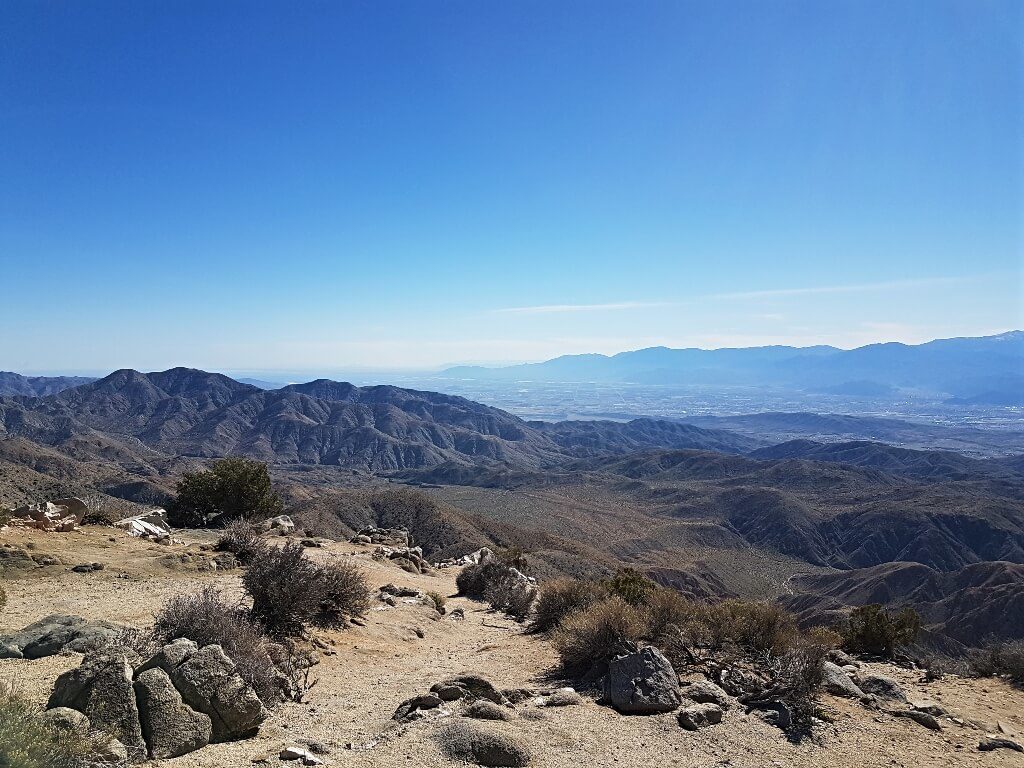
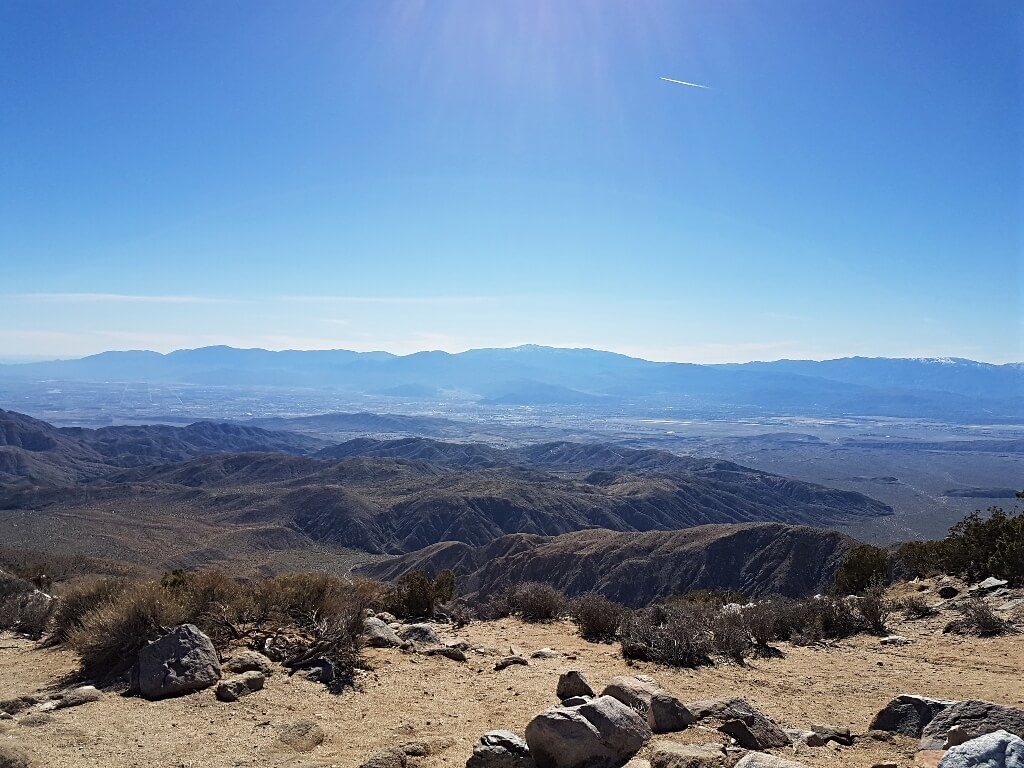
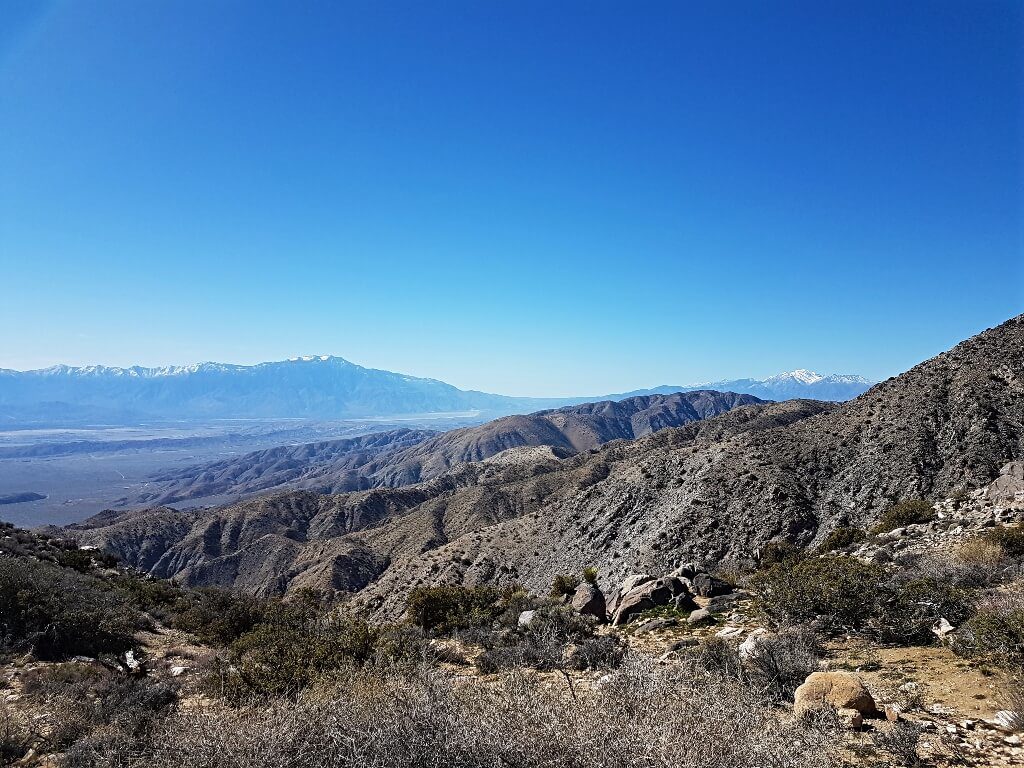
This is another short .25-mile trail, but one that offers up spectacular views of the Coachella Valley below. The lookout sits atop the Little San Bernardino Mountains at an elevation of 5185 ft. From here, hikers can see the Salton Sea and the San Andreas Fault lying in the valley below, as well as multiple snow-covered mountains that back the far side of the valley.
The path is paved and wheelchair accessible but fairly steep. It’s a popular spot but well worth the crowds and potential pain of finding a parking spot.
Time Required: depends how long you want to stand and look at the view, but 15-30 mins should be enough to get your fill.
Barker Dam Trail
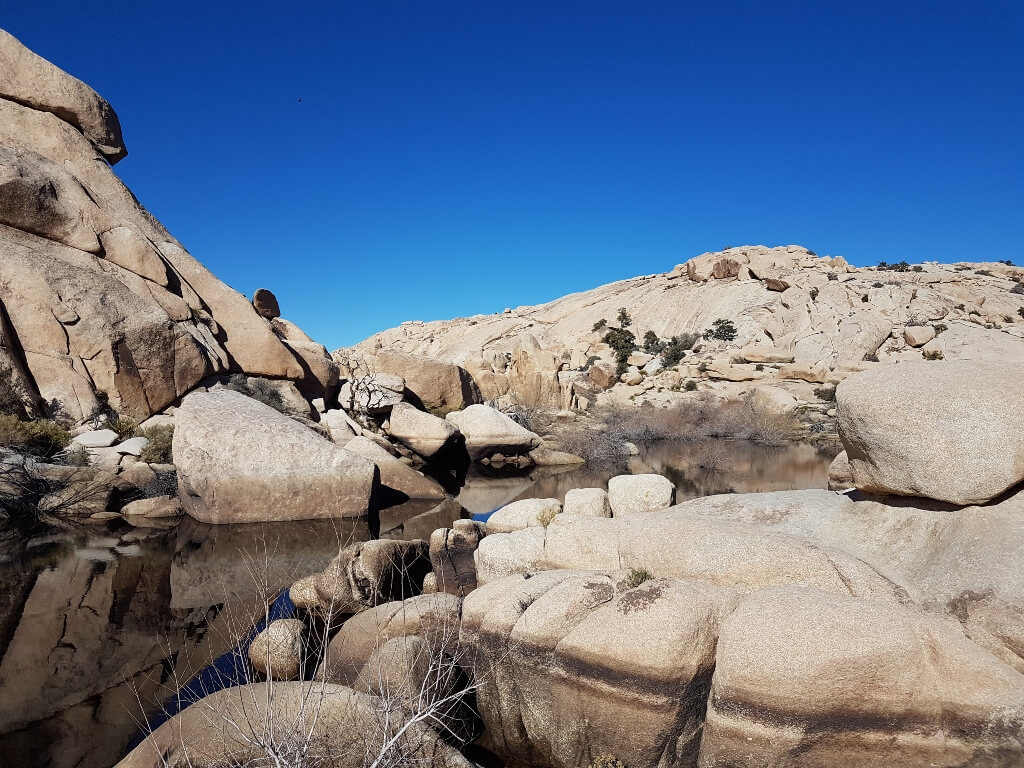
The Barker Dam Trail is an easy 1-mile loop trail which brings hikers to a historic dam originally built by cattle ranchers in the early 1900s. The dam is often dry but we happened to hit a rather wet time of the year and it was full of water when we visited.
We also happened to hit a time when the trail was under construction so we were forced to do an out-and-back of only half the trail, rather than the full loop.
We still enjoyed the hike and got a good feel for the area. This was another popular trail and we ended up parking quite a ways down the road in a pull out area as the lot near the trailhead was full. The walk to and from the car added a bit of time onto our stop but since it was our last hike of the day it didn’t throw us off too much.
Time Required: allow 1 hour to do the full loop, and possibly more to find parking.
Drive from the West Entrance back to Palm Springs
We left Joshua Tree National Park via Park Boulevard road, which exits near the Joshua Tree Visitor Center. We then took Highway 62 (or the Twentynine Palms Highway) back to Palm Springs. The drive takes you through the Yucca and Morongo valleys before a final decent back into the Coachella Valley.
Time Required: it’s about a 45-minute drive from the north west entrance of the park to Palm Springs.
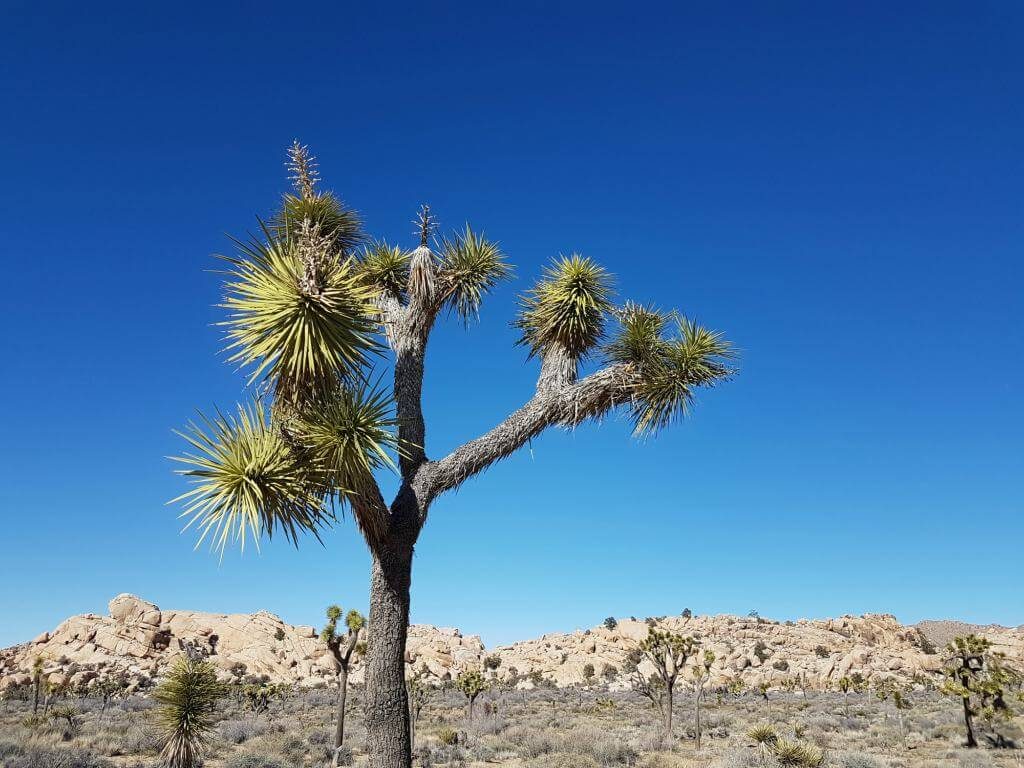
How Much Time to Spend in Joshua Tree National Park
Including the drive to/from Palm Springs as well as the drive time within the park, the itinerary above can be done in around 8-9 hours – making it an ideal day trip.
Of course, this was just a sample of what Joshua Tree can offer and you could easily add a few more hours onto the day to fit in a couple more shorter hikes or a longer one, such as the climb up Ryan Mountain or the trek out to Lost Horse Mine.
For those wanting to spend even more time in Joshua Tree, there are multiple campgrounds as well as backcountry camping available in the park.
When to Visit Joshua Tree National Park
The desert climate of Joshua Tree National Park means that timing your visit right will make a huge difference in what you can see and do in a day.
Daytime highs can be scorching in the summer months and hikers will want to get out on the trails early in the day or later in the evening to avoid the hottest part of the day. This can make it trickier to see the park in a single day trip. You’ll also want to make sure to pack extra water in the summer as you’ll find little shade and lots of sun on the trails in Joshua Tree.
The winter months can be a more pleasant time to visit the park and will allow you to make the most of a full day. Daytime highs are perfect for hiking and the sun can be a welcome addition on a cool morning. Temperatures do drop significantly overnight so pack extra layers for early morning or later in the day outings. Joshua Tree does occasionally get snow in the winter, but amounts are generally small.
Getting to and Around Joshua Tree National Park
The closest airport to Joshua Tree is located in Palm Springs, only 45 minutes away. The Los Angeles airport is 3 hours from the park.
There is no public transit to the park from surrounding towns and cities.
It is possible to organize a day trip with a tour company, though it is pricey.
Renting a car is the best option as it allows you to set your own pace and will only cost around US$50 for the day. It’s an easy drive on major highways from surrounding areas. There is a US$30 entrance fee per vehicle when visiting Joshua Tree.
Having a rental car also solves the problem of getting around within Joshua Tree National Park. The main roads within the park are well maintained and easy to navigate. If you’re planning to venture off on side roads, a 4-wheel drive vehicle is recommended.
If you opt not to rent your own car, the RoadRunner Shuttle Bus operates within the park and takes visitors to main attractions in the Mojave Desert section of the park. The shuttle only runs during certain times of the year so be sure to check the schedule before visiting Joshua Tree. The shuttle itself is free and those riding don’t require a park pass.
Things to Know Before Visiting Joshua Tree National Park
Water is only available at the visitor centers and a few select campgrounds. Be sure to bring enough water to last for your visit. If you’re visiting during warmer months, bring extra.
There are no services within the park so bring your lunch and snacks for the day.
There is little or no cell phone coverage in the majority of the park. Download your maps ahead of time, let someone know where you’ll be hiking, and don’t rely on your phone to save you if you get in a tough situation.
The weather can change drastically from cool mornings to hot afternoons. Dress in layers and bring sunscreen.
Pets are not allowed on trails so if you’re planning to bring Fido, you won’t be able to hike.
We saw tons of people stopping randomly in the middle of the roadways to take pictures of the Joshua Trees. There are plenty of pull outs, parking areas, and the Joshua Trees are everywhere so there’s really no reason to stop traffic to get that shot. Don’t be that person.
If you’re taking a day trip to Joshua Tree, I hope this guide helps you make the most of your day!
To see more photos from our time in Joshua Tree, check out my Joshua Tree National Park Photo Essay and don’t miss 5 Things to Do in Palm Springs, California for things to do on the rest of your trip!
